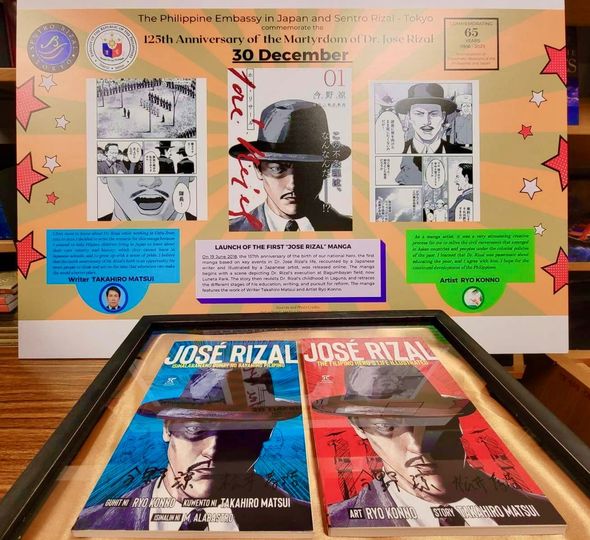Art and Culture
Rizal’s life, work, values promoted through Japanese manga

MANILA – The Philippine Embassy in Japan has unveiled a special addition to its Sentro Rizal Library just in time for the 125th anniversary of Dr. Jose Rizal’s martyrdom– copies of the first manga centered on the national hero’s life, work, and values.
The English and Filipino versions of the manga entitled, “Jose Rizal, The Filipino Hero’s Life Illustrated,” which bear the signatures of the writer Takahiro Matsui and artist Ryo Konno, were officially turned over to the Sentro Rizal Library of the Embassy last December 27.
“Dr. Rizal’s life, work, and values should be shared with generations of young Filipino and Japanese students alike. As a teacher before joining the diplomatic service, I know for a fact that asking students to remember dates, names and events is not sufficient,” Philippine Embassy in Japan Charge d’affaires Robespierre Bolivar said.
“As such, the publication of this Manga presents a creative way to capture the interest and engage younger generations, who are fans of comic books, to learn more about our national hero,” he added.
Matsui, for his part, spoke about his admiration for Dr. Rizal and his various talents, intellect, and perspectives about life.
He hoped that with his work, he can share Rizal’s inspiration to children of Filipino descent living in Japan, describing the national hero as an “honorable man in the Philippines who devoted himself to the cause of human dignity and freedom”.
The manga relates the key events in Rizal’s life through flashbacks, beginning with a scene depicting his execution at Bagumbayan, now Luneta Park.
The story then revisits his childhood in Laguna and retraces the different stages of his education, writing, and pursuit of far-reaching reforms during the Spanish rule in the Philippines.
It was first released online in 2018, before being published in Filipino, English, and Nihongo.
Japan and the Philippines have a historic relationship that banks on the close people-to-people contacts between the Filipinos and the Japanese.
Rizal, fleeing persecution from the Spanish after the publication of his book Noli Me Tangere, had also visited Tokyo in 1888.
As recounted by historians, Rizal who was strolling through Hibiya Park heard musicians playing Strauss and, when he approached, found out that the band players were Filipinos.
His visit to Hibiya Park eventually led to the laying of a bust of him in the park and to this day, this statue stands serene and proud in a quiet corner of Hibiya Park.
The statue was said to have motivated the Japanese illustrator to look into his life and from this research, the manga version of the Filipino martyr was born.





















